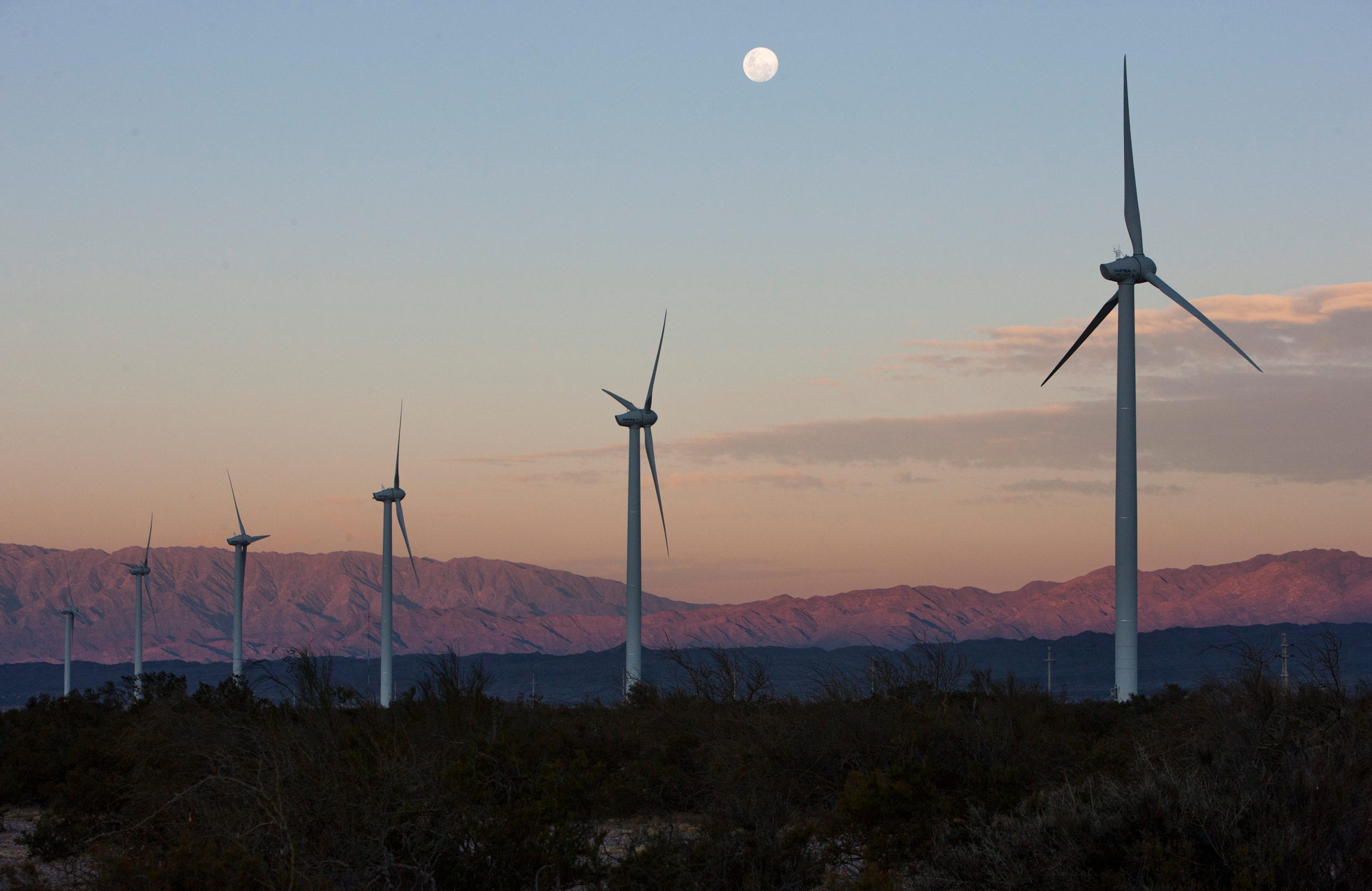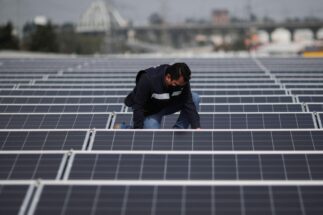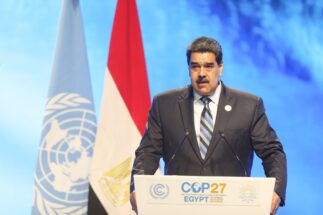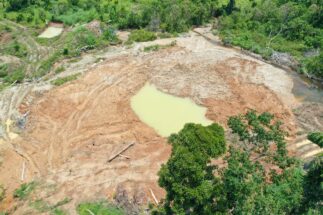At the upcoming COP27 climate summit in Egypt, countries will seek to reach agreement over the functioning of a new global carbon market under the United Nations’ Paris Agreement. Carbon trading systems – many of which already exist in both public and private spheres, and at national, regional and international levels – have been received with enthusiasm by many governments and the corporate world, although they are not without their critics.
Carbon markets trade in greenhouse gas emissions. When a buyer purchases a “carbon credit”, they are able to count the emission reductions made by the credit’s seller towards their own calculations. The seller’s reductions may have been made through verifiable improvements in the energy efficiency of their activities – of industrial processes, for instance – or, as an example from the agricultural sector, in changing livestock management practices to improve soil carbon sequestration, among various other approaches.

As countries and companies confront an ever more pressing need to reduce their emissions, recent years have seen advances in the creation and fine-tuning of carbon markets. Much finance has come from developed countries for projects to be implemented in developing countries, also allowing them to receive an additional flow of money.
So far, Argentina has 58 projects registered in different carbon markets, mostly associated with renewable energies and forestry offsets. In these projects, Argentine companies have “sold” carbon emission reductions to other actors in industrialised countries interested in complying with regulatory requirements in their jurisdictions, or in order to appear more sustainable to consumers.
Recently in Argentina, sectors such as livestock and agriculture have begun pushing to sell credits. Even provinces, such as northeastern Misiones, are preparing to launch credits associated with forest conservation. However, amid this flurry of activity, experts warn that these financial instruments, if misused, can in fact be counterproductive in efforts to reduce emissions and meet global targets.
What are carbon credits?
In 2005, the Kyoto Protocol was put into operation. Under this UN climate agreement, which had been struck in 1997, industrialised countries committed themselves to limit and reduce greenhouse gas emissions through binding targets.
One of the tools available for these targets was the trading of emission reductions in the form of carbon credits. This gave rise to the Clean Development Mechanism (CDM), an offset scheme which allowed a country to financially support an emission reduction or carbon sequestration project located in a developing country, in exchange for claiming the results for itself.
The CDM is what is known as a “compliance” carbon market, as it is organised around regulatory requirements on greenhouse gas emissions imposed by sub-national bodies, countries, regional or multilateral institutions. Compliance markets have a public or multilateral regulatory body – in this case the United Nations.
Carbon credits will continue to gain in importance because demand is outstripping supply, with more and more companies interested in offsetting their emissions
One of the most demanding compliance markets is the European Union’s Emissions Trading Scheme (ETS), which is made up of some 10,000 companies responsible for 40% of total emissions in the region. These companies obtain emission “allowances” from member states, which are decreasing over time as efforts towards decarbonisation ramp up. If the company emits less than the allowed ceiling, it can sell the allowance on the market. On the other hand, if it emits more than the limit, it must buy credits.
According to its latest annual report, more than 8,000 activities are registered under the CDM worldwide. More than 80% of registered projects are located in the Asia-Pacific region, followed by 13% from Latin America and the Caribbean.
In addition to compliance markets, there are also “voluntary” carbon markets, where credits associated with independent emission reduction initiatives are traded. Voluntary schemes do not have a monitoring body but work with certification agencies that check and verify that emission reduction projects are consistent.

According to the University of California, Berkeley, globally there are more than 6,000 projects listed in the Climate Action Reserve, the American Carbon Registry, Verra, and Gold Standard, the four major registries that cover almost all of the world’s voluntary market offsets. Since 1997, these projects have issued over 1.5 billion credits, held to be equivalent to emissions reduction of 1.5 billion tonnes of carbon dioxide. Most voluntary projects are concentrated in the forestry and renewable energy sectors.
“Carbon credits will continue to gain in importance because demand is outstripping supply. More and more companies are interested in offsetting their emissions,” explains Pablo Verra, chief strategy officer at Core Zero, a company that seeks to generate carbon credits through projects that reduce food waste.
The price of a carbon credit varies according to the region and the type of project, among other variables. Currently, the value of one credit – and thus a tonne of CO2 equivalent – is around US$10–25 in Argentina, according to market sources. In industrialised countries, where the demand for credits is stronger due to the pressure of regulations and consumer demands, the price can be much higher.
Carbon markets in Argentina
Argentina saw an initial boom in carbon market activity between 2006 and 2016, with a peak in 2012. During this period, several projects were registered under the CDM. In recent years, there has been a timid advance of projects in voluntary markets, though this is the area in which the greatest business opportunities are now appearing.
58
the number of projects in Argentina registered in different carbon markets, most of which are linked to renewable energies and forestry offsets
According to official data, 46 CDM projects and 12 projects in voluntary markets have been registered in the country so far. In total, 17.5 million credits have already been sold – equivalent to 17.5 million tonnes of CO2 mitigated or reduced.
Unlike the EU, Argentina does not have a regulated system in which an overall emissions cap is set and allowances are traded.
The Argentine company with the largest participation in the sale of carbon credits is Genneia, which through two wind energy projects and one solar project has issued more than 1 million credits. Another major player is the public-private company YPF Luz, which has issued 601,000 credits as a result of the Manantiales wind farm in the province of Chubut.
“The interest of companies in this type of certification has increased exponentially. Renewable projects that have a positive impact on the communities near where they are located, as in the case of Manantiales, have seen their price double or triple in the last year,” a YPF Luz representative told Diálogo Chino.
A spokesperson for Arcor, the country’s largest food company, told Diálogo Chino that its first project in the voluntary market was to replace the use of fossil fuels with sugar cane waste generated in the production process. The company expects to have reached accredited emission reductions of 600,000 tonnes of CO2 by the end of the year.

In total, 60% of the voluntary market projects implemented in the country are linked to the renewable energy sector, followed by the waste sector, where landfill projects that include the capture, burning and/or use of biogas stand out.
Meanwhile, the UK-based oil company Phoenix Global Resources, which operates in the Vaca Muerta hydrocarbon field in the country’s north, signed an agreement with the Misiones government to sell carbon credits linked to the conservation of rainforest in the province. The certifier for the deal is Verra. It is estimated the initiative could raise as much as US$45 million.
Argentina’s livestock sector – overseeing an activity that creates high greenhouse gas emissions, due to releases of methane, CO2 and nitrous oxide – is one that has been trying to enter the carbon market. Producers are looking to generate credits through emissions reductions in their operations, with an increasing number of industry figures positioning the activity as potentially “carbon neutral”, due to soil carbon sequestration on pasture land.
“There is a tremendous opportunity for meat and grain producers to become providers of environmental services,” says Pablo Francisco Borrelli, co-founder of Ruuts, one such Argentine company focused on generating carbon credits from the agricultural sector.
Warnings ahead of COP27
When it was concluded in 2015, the Paris Agreement recognised, under its Article 6, several different modes of international cooperation for countries to implement their national climate commitments, including two proposed new carbon markets. Article 6 has long proven contentious, and despite agreements reached at last year’s COP26 summit on the general rules for these market mechanisms, much remains to be discussed and finalised.
On the one hand, COP27 is expected to define how carbon credit trading will be reported, registered and tracked through bilateral agreements between countries and/or regions, such as the one between Switzerland and Peru – one of the novelties that arose from the Paris Agreement.
In parallel are discussions around the creation of a global carbon market similar to the Kyoto Protocol’s CDM but with greater business participation, and potentially new areas of credit generation. For example, Brazil, together with Indonesia and the Democratic Republic of Congo, is expected to push for credit generation through forest conservation projects.
Credit is a tool, not the solution
However, warnings regarding these mechanisms continue to be heard. “Unlike [the effects of] emissions from fossil fuels, which are permanent, trees and soil can only store carbon temporarily,” says Catalina Gonda, climate policy coordinator at the NGO Fundación Ambiente y Recursos Naturales (FARN). “This permanence is crucial when qualifying the integrity of a carbon credit.”
Pablo Verra of Core Zero argues that “it is important to see who the buyer of the credit is”.
“Credits should not be sold to companies without consistent plans to reduce their own emissions,” Verra says. “Credit is a tool, not the solution.”
For carbon credit trading to truly contribute to climate change mitigation, another key element is additionality, which implies that emission reductions must come from sources that would not have occurred without the market, and financing, of carbon credits.
There are ongoing questions around renewable energy credits as, in general, such projects are sufficiently profitable to be able to develop without the support of carbon markets.
A further risk underlying the voluntary carbon market is the “double counting” of emission reductions, with the reductions achieved by an offset project potentially being recorded both in the country of origin and by the buyer of the credit.
COP27 will be held in the Egyptian resort town of Sharm el-Sheikh from 6 to 18 November 2022.








